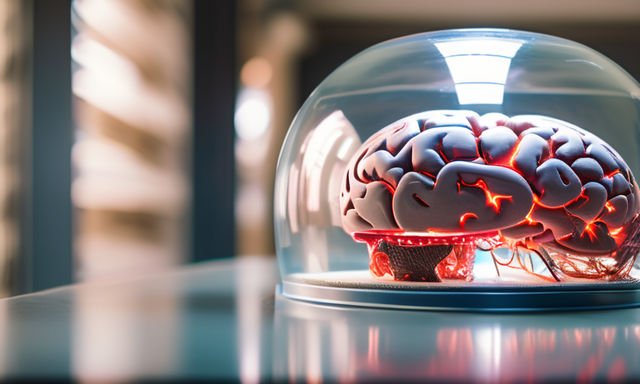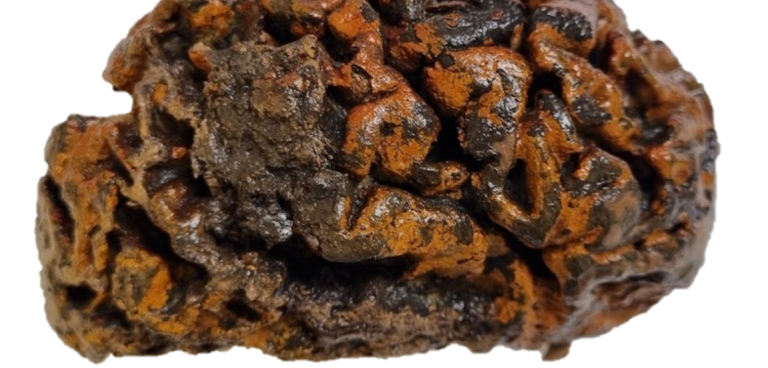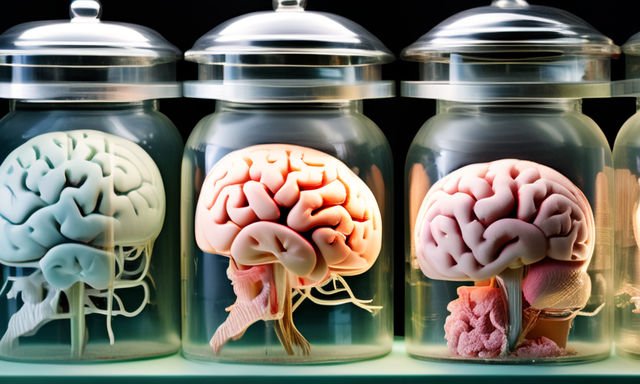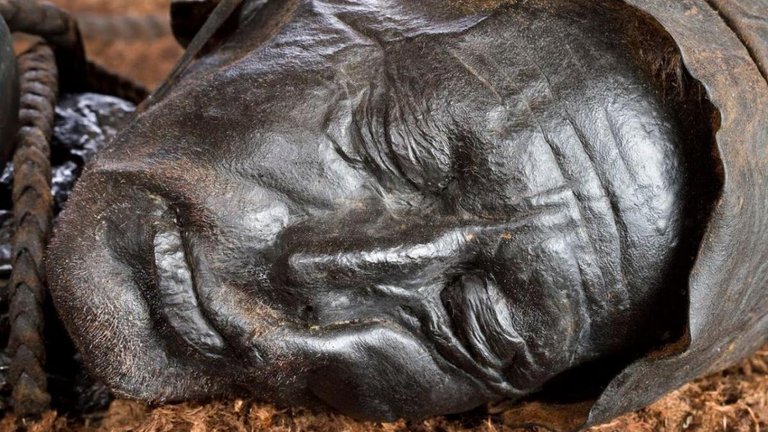Our brain refuses to die.

The British University of Oxford published on March 20 research that is a mystery about what happens to our body after death, our veins, marrows and remains of organs become dust or not; In principle yes, but that does not always happen and there is a case that intrigues scientists and that is the strange resistance of the brain to turning into dust.

Souce
To try to answer this mystery, a group of researchers from the University of Oxford in the United Kingdom led by postgraduate researcher Alexandra Morton-Hayward carried out the largest study to date of the global archaeological literature on human brains, they have managed to compile an archive that multiplies by 20 the number of brains that were in the previous records, in total they have gathered files of more than 4,000 belonging to more than 200 different places, on six continents.
The oldest ones are 12,000 years old, their origin is very diverse, there are brains that belonged to people from the Egyptian and Korean culture, through British and Danish monks, to Arctic explorers and victims of war, the places where they have been found They are also of a bewildering variety, the shores of a lake in Stone Age Sweden, the depths of an Iranian salt mine 2,500 years ago or the Summit of the Andes at the time of the height of the Inca empire.

A file was made for each brain where all the available data was analyzed, from historical climatic data to the geology of the place where it was found. The intention was to have an idea about how this extraordinary conservation was possible. It seems that factors such as the dehydration, that is, the organ dries out, freezing, saponification, which is the transformation of the body's fats into the so-called grave wax, and tanning, which is generally produced with peat, which is how the mummies of the animals are formed. swamps.
This does not explain the strange preservation of the brains, only at the beginning of the investigation of a disconcerting mystery and this term is not used by me, the researchers use it because the researchers remember that in the forensic field it is well known that the brain is one of the first organs to decompose after death and yet there are these 4000 extraordinary cases and surely there are still more that remain to be discovered.

Souce
The 2300 year old Tollund Man
Of those analyzed by the researchers, there are about 1,300 that are even stranger, since they are the only soft organs that have been preserved, that is, there were the bones and the brain, this is something really strange and has raised questions about what it is like. that the brain can resist destruction when the other organs disappear and wait because there are more.
Curiously, these brains that survived the rest of the organs also represent the oldest in the archive and there are several that date back to the last ice age. The conservation mechanism of the oldest remains a complete enigma, although the team of scientists is considering some hypotheses such as the possible intervention of metals in the conservation process, but the research is only in its beginnings.
Once we know how they have been preserved, perhaps we could address another question: we could one day reveal the information they may contain.
Official website
Official website
Thank you for visiting my blog. If you like posts about
#science,
#planet,
#politics,
#rights #crypto,
#traveling and discovering secrets and beauties of the
#universe, feel free to Follow me as these are the topics I write about the most. Have a wonderful day and stay on this great platform :) :)
! The truth will set us free and science is the one that is closest to the truth!
Em português
Nosso cérebro se recusa a morrer.

A Universidade Britânica de Oxford publicou no dia 20 de março uma pesquisa que é um mistério sobre o que acontece com nosso corpo após a morte, nossas veias, medulas e restos de órgãos viram pó ou não; Em princípio sim, mas nem sempre isso acontece e há um caso que intriga os cientistas e que é a estranha resistência do cérebro em virar pó.

Fonte
Para tentar responder a este mistério, um grupo de pesquisadores da Universidade de Oxford, no Reino Unido, liderado pela pesquisadora de pós-graduação Alexandra Morton-Hayward, realizou o maior estudo até hoje da literatura arqueológica global sobre cérebros humanos, eles conseguiram compilar um arquivo que multiplica por 20 o número de cérebros que constavam nos registros anteriores, no total reuniram arquivos de mais de 4.000 pertencentes a mais de 200 lugares diferentes, em seis continentes.
Os mais antigos têm 12.000 anos, a sua origem é muito diversa, existem cérebros que pertenceram a pessoas da cultura egípcia e coreana, passando por monges britânicos e dinamarqueses, até exploradores do Ártico e vítimas de guerra, os locais onde foram encontrados. também são de uma variedade desconcertante, as margens de um lago na Idade da Pedra na Suécia, as profundezas de uma mina de sal iraniana há 2.500 anos ou o cume dos Andes na época do auge do império Inca.

Para cada cérebro foi feito um arquivo onde foram analisados todos os dados disponíveis, desde dados climáticos históricos até a geologia do local onde foi encontrado. A intenção era ter uma ideia de como essa conservação extraordinária foi possível. Parece que fatores como a desidratação, ou seja, o ressecamento do órgão, o congelamento, a saponificação, que é a transformação das gorduras do corpo na chamada cera de sepultura, e o curtimento, que geralmente é produzido com turfa, que é como as múmias dos animais são formadas. pântanos.
Isto não explica a estranha preservação dos cérebros, apenas no início da investigação de um mistério desconcertante e este termo não é usado por mim, os investigadores usam-no porque os investigadores lembram que na área forense é sabido que o O cérebro é um dos primeiros órgãos a decompor-se após a morte e, no entanto, existem estes 4.000 casos extraordinários e certamente ainda há mais por descobrir.

Fonte
The 2300 year old Tollund Man
Dos analisados pelos pesquisadores, há cerca de 1.300 que são ainda mais estranhos, pois são os únicos órgãos moles que foram preservados, ou seja, estavam os ossos e o cérebro, isso é algo realmente estranho e tem levantado questões sobre o que é como. que o cérebro pode resistir à destruição quando os outros órgãos desaparecem e esperar porque há mais.
Curiosamente, estes cérebros que sobreviveram aos restantes órgãos representam também os mais antigos do arquivo e há vários que datam da última era glacial. O mecanismo de conservação dos mais antigos continua a ser um completo enigma, embora a equipa de cientistas esteja a considerar algumas hipóteses como a possível intervenção dos metais no processo de conservação, mas a investigação está apenas no início.
Uma vez que saibamos como foram preservados, talvez possamos abordar outra questão: um dia poderemos revelar a informação que podem conter.
Website oficial
Website oficial
Obrigado por visitar meu blog. Se você gosta de posts sobre
#ciência,
#planeta,
#política,
#direitos #cripto,
#viajar e descobrir segredos e belezas do
#universo, fique à vontade para me seguir, pois esses são os assuntos sobre os quais mais escrevo. Tenha um dia maravilhoso e fique nesta ótima plataforma :) :)
! A verdade nos libertará e a ciência é a que está mais próxima da verdade!









